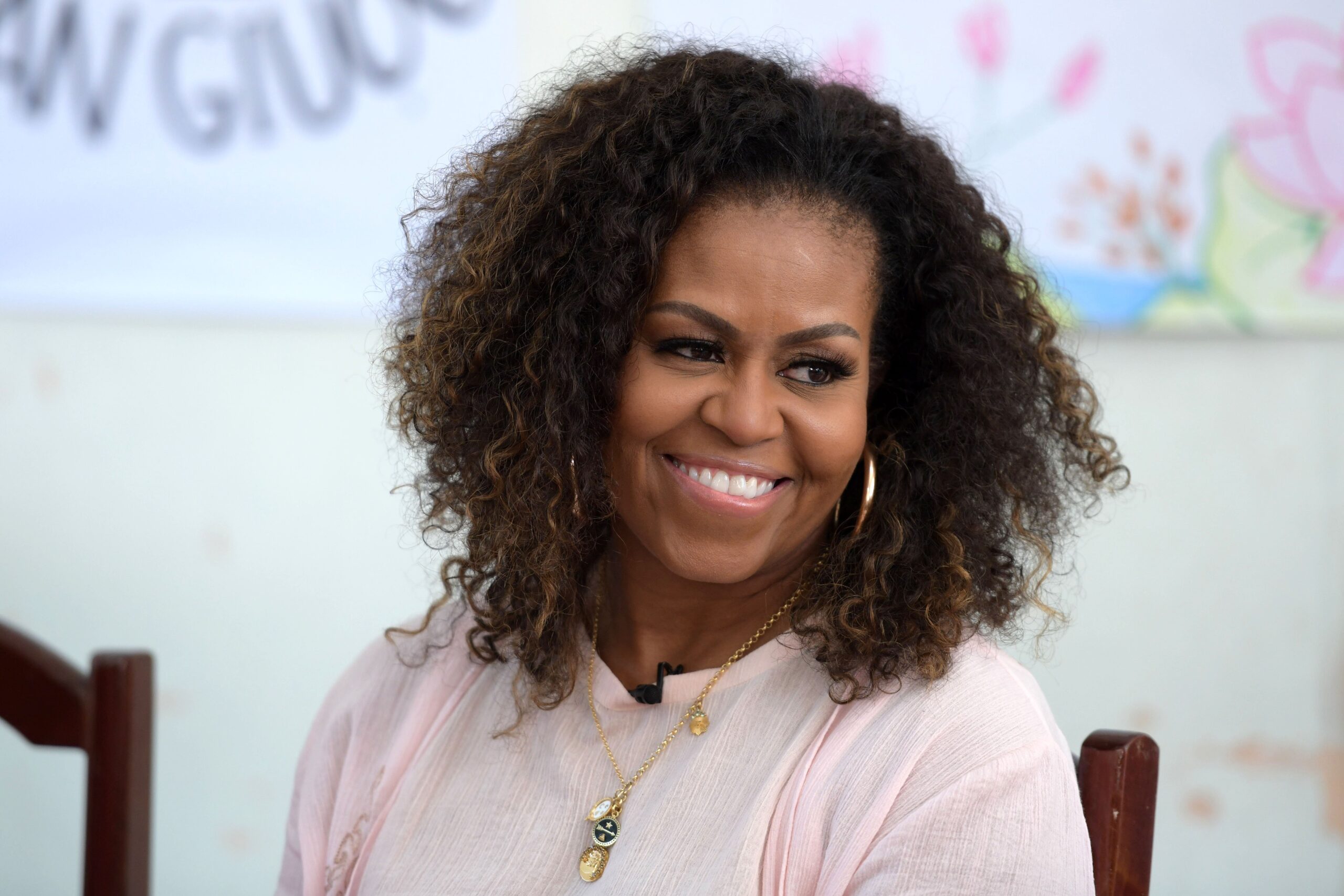CULTURE
Michelle Obama Launches Initiative to Reach Young Voters and Increase Voter Turnout
23 Sep, 20

Former US first lady Michelle Obama smiles as she meets with Vietnamese students in Can Giuoc district, Long An province, Vietnam, 09 December 2019.
Photo by STR/EPA-EFE/Shutterstock
In 2018, Michelle Obama launched an initiative called When We All Vote.
Her nonpartisan organization is dedicated to closing the race and age voting gaps, getting young people to the polls, and making the voting process more accessible and appealing to all.
Partners included Tom Hanks, Lin-Manuel Miranda, Janelle Monáe, Chris Paul, Faith Hill, Selena Gomez, Liza Koshy, Megan Rapinoe, Shonda Rhimes, Tracee Ellis Ross, Kerry Washington, and Rita Wilson, as the organization engaged with millions of voters prior to the 2018 election. Hosting over 2,500 in-person events led to 2018’s boundary-breaking turnout.
In 2020, when in-person organizational opportunities are largely off the table, When We All Vote is focusing its energy on digital initiatives and online content. Today, Michelle announced the start of a new digital initiative called Vote Loud, which aims to reach and inspire young people in order to get them to the polls on Election Day.
Announced the day after National Voter Registration Day, Tuesday, September 23rd, Vote Loud aims to reach young voters—specifically BIPOC voters between the ages of 18 and 24—by meeting them where they are: on the Internet.
So far, the organization has partnered with a variety of celebrities to create bite-sized video content. Gaten Matarazzo starred in a video about the environment, Lisa Koshy spoke out about healthcare. Khalid created videos about taxes and thugs, and Becky G spoke on women’s issues.
Your Voice | Environmentwww.youtube.com
Your Voice | Taxeswww.youtube.com
Your Voice | Thugswww.youtube.com
Your Voice | Immigrationwww.youtube.com
Your Voice | Protestingwww.youtube.com
The organization is also working with brands like Gucci Changemakers, WarnerMedia, and Houseparty in order to reach additional voters. As part of the initiative, Houseparty is releasing a new game called Pick Me! that will encourage users to vote.
“We’ve got to do a better job of speaking directly to the motivations and unique challenges that young and first-time voters face around voting,” Michelle Obama said. “That’s a big part of the reason why I created When We All Vote—to spark important conversations, share critical resources, and make sure people get registered and get out to vote. It’s up to all of us to encourage and work with the next generation to really change the culture around voting.”
Another influential political figure also made a call for young voters recently: In a new video, Senator Bernie Sanders made an impassioned plea for young voters to get to the polls.
Young People Can Transform This Election
“I am 79, and I am angry. If I were 18 or 20, I would be very, very, very angry,” Sanders said. “I would be angry that I can’t afford to go to college. Or I’m leaving school deeply in debt. I would be furious that we have a president who demonizes the Latino community…I would be angry that I can’t afford healthcare or I can’t afford decent housing.”
Sanders continued, “And what you have heard from all our wonderful panelists and great organizations is that the future of our country and in fact the future of the entire world rests with the younger people. They are a beautiful generation, a progressive generation. A compassionate generation. And what we have to do now in the next six weeks is to make sure that everyone in that generation registers to vote, gets their friends, co-workers, family members out to vote, and when we do that…we can rethink America…and create a government and a nation that works for all of us.”
In 2016, 43% of eligible voters—nearly 100 million Americans—didn’t vote. The United States also has one of the lowest rates of youth voter turnout in the world, according to Forbes. Initiatives like When We All Vote aim to change this, but they face a variety of challenges.
Statistics show that marginalized communities and young voters face the highest barriers to voting. Voter suppression and disenfranchisement are ongoing problems, and the COVID-19 pandemic will make voting even more complicated this year. Many people will also be voting absentee, a process that requires (among other tedious steps) successfully mailing multiple letters and meeting a variety of deadlines.
Research shows that today’s young people are mobilized and ready to make their voices heard. Now all that’s left to do is actually get the people to the polls.
- Taylor Swift to Be Shouted Out By Michelle Obama At Kids’ Choice … ›
- Kanye West Challenges Michelle Obama To A Kim Kardashian ‘Ass … ›
- Michelle Obama Gracefully Shades Trump In Final Commencement … ›
- Meghan Markle’s Disappointing Interview with Michelle Obama … ›
- Michelle Obama’s “Waffles and Mochi” Looks Adorable, Delicious – Popdust ›













